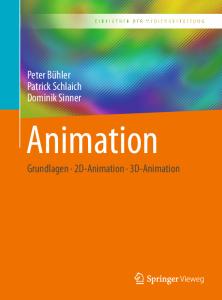A Functional Perspective on the Semiotic Features of Science Animation
Studies of the efficacy of animation in facilitating learning science knowledge often adopt a cognitive perspective on the processes of learning without adequately discussing the semiotic features of animation. Complementing the prevalent cognitive approa
- PDF / 820,450 Bytes
- 30 Pages / 439.37 x 666.142 pts Page_size
- 44 Downloads / 327 Views
A Functional Perspective on the Semiotic Features of Science Animation Yufei He
2.1
Introduction
Recent decades have witnessed an increased use of animation in education (Lowe & Ploetzner, 2017; Ploetzner & Lowe, 2012), especially for science education (Berney & Bétrancourt, 2016). The popularity of science animation is largely due to its advantage of dynamically visualizing complex systems and is supported by the advent of digital media. Technology has brought innovations to the traditional way of making animation, i.e. frame-by-frame production, which is laborious and timeconsuming. Nowadays, non-animation professionals can also make simple animations by using easily accessible and affordable computer software. The use of computer code also enables automatic generation of animations which present more realistic depictions of the subject matter (Berry, 2018). The popularity of using science animation in education has ignited a strong research interest in the efficacy of animation in fostering learning. Most studies adopt a cognitive perspective to investigate the processes involved in interpreting dynamic visualization (e.g. Lowe, 2003, 2004; Tversky, Morrison, & Betrancourt, 2002). Many studies use experiments to compare static images with animation (e.g. Adesope & Nesbit, 2013; Ayres, Marcus, Chan, & Qian, 2009) or compare animation with live-action video (e.g. Smith, McLaughlin, & Brown, 2012) to see whether animation is superior in facilitating students’ learning of science knowledge. These studies have produced contradictory findings in terms of the efficacy of animation. Meta-analyses of experimental studies conducted by Berney and Bétrancourt (2016) and Höffler and Leutner (2007) report an overall positive effect
Y. He (*) School of English for International Business, Guangdong University of Foreign Studies, Guangzhou, China e-mail: [email protected] © Springer Nature Switzerland AG 2020 L. Unsworth (ed.), Learning from Animations in Science Education, Innovations in Science Education and Technology 25, https://doi.org/10.1007/978-3-030-56047-8_2
25
26
Y. He
of animation. However, many researchers are also concerned about the negative consequences of learning from animation due to its visual complexity (Lowe, 2003) – there may be a huge amount of information to be processed within a short excerpt of animation. This visual complexity is made more prominent by the transient nature of animation (Ainsworth & VanLabeke, 2004; Mayer, Hegarty, Mayer, & Campbell, 2005). Unlike static images, information in animations is constantly in motion (unless the viewer hits a pause button to ponder over one frame of an animation), which makes it even harder for information to be processed continuously. A common problem that may explain the contradictory findings is animation blindness (cf. Maton, 2014), i.e. neglecting the semiotic features of animation itself (Berney & Bétrancourt, 2016; Ploetzner & Lowe, 2012). It is true that animation is basically about change. However, change is by no means unitary. There are diff
Data Loading...











